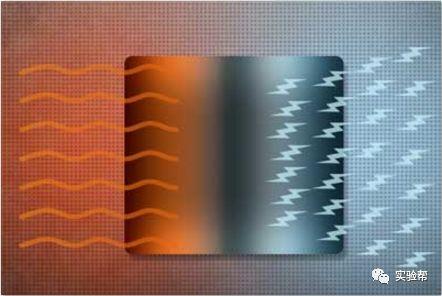18627036752
service@hbsgr.com
Imagine the following scenario: instead of relying on traditional electric power to run air conditioning, you rely on the heat of the sun in the warm summer to run air conditioning. With the advancement of thermoelectric technology, this sustainable solution may one day become a reality.
Thermoelectric devices are made of materials capable of converting temperature differences into electricity without the need for any moving parts - a property that makes them potentially attractive sources of power. This phenomenon is reversible: if the thermoelectric device is electrified, there will be a temperature difference. Today, thermoelectric devices are used for relatively low-power applications, such as power supply for small sensors along oil pipelines, backup batteries on space detectors, and cooling micro-fluids.
But scientists hope to design more powerful thermoelectric devices to collect heat, which is a byproduct of industrial processes and internal combustion engines, and convert waste heat into electricity. However, the efficiency of thermoelectric devices or the amount of energy they can generate is currently limited.
Now, MIT researchers have found a way to triple efficiency using "topological" materials with unique electronic properties. Although previous work has shown that topological materials can be used as effective thermoelectric systems, little research has been done on how electrons in such materials will flow in response to temperature differences to generate thermoelectric effects.

opological materials are ideal thermoelectric materials
MIT researchers are looking for ways to convert heat into electricity, and have found possibilities in some topological materials (Image: Christine Daniloff / MIT) Photo source: Christine Daniloff / M MIT
In a paper published this week in Proceedings of the National Academy of Sciences ("Electron mean-free-path filtering in Dirac material for improved thermoelectric performance"), MIT researchers identified some potential features that make it possible to compare existing devices. Some topological materials become more efficient thermoelectric materials.
Te-Huan Liu, a postdoctoral fellow at MIT's Department of Mechanical Engineering, said: "We have found that we can push the boundaries of this nanostructured material to make topological materials a good thermoelectric material, better than conventional semiconductors (e.g., silicon). "Ultimately, this could be a way of converting clean energy, which could help us generate electricity from heating objects, which would reduce our carbon dioxide emissions."
A "Free Path" Measurement Method
When there is a temperature gradient in a thermoelectric material - for example, when one end is heated and the other end is cooled, the electrons in the material begin to flow from the hot end to the cold end, generating an electric current. The larger the temperature difference is, the more carriers are generated and the greater the power is generated. The amount of energy that can be generated depends on the specific transmission characteristics of electrons in a given material.
Scientists have observed that some topological materials can be made into efficient thermoelectric devices through nanostructures. Scientists have used this technology to synthesize materials by patterning their characteristics at nanoscale. Scientists believe that the thermoelectric advantage of topological materials comes from the low thermal conductivity of their nanostructures. However, it is not clear how the improvement of efficiency is related to the inherent topological properties of materials.
To answer this question, Liu and his colleagues studied the thermoelectric properties of tin telluride, which is considered to be a good topological material for thermoelectric materials. Electrons in tin telluride also show unique properties for simulating a class of topological materials called Dirac.
The team aims to understand the effects of nanostructures on the thermoelectric properties of tin telluride by simulating the way electrons pass through the material. To characterize electron transport, scientists often use a measurement method called "average free path", or an average distance, which is the average distance of an electron with a given energy before it is scattered by multiple targets or defects in a material.
Nanostructured materials are similar to tiny crystals, each with boundaries, known as grain boundaries, which separate one crystal from another. When electrons encounter these boundaries, they tend to scatter in various ways. Electrons with long average free pat
Reduce size
In their further simulation, the team used the size of a single grain of tin telluride to see if it had any effect on the electron flow at the temperature gradient. They found that when they reduced their average particle size to about 10 nanometers, their boundaries were closer, and they observed an increase in the contribution of energetic electrons.
That is to say, with the decrease of grain size, high-energy electrons contribute more to the conduction of materials than low-energy electrons, because they have shorter average free path and are unlikely to scatter to grain boundaries. This may result in a large voltage difference.
In addition, the researchers found that reducing the average grain size of tin telluride to about 10 nanometers produced three times as much electricity as using large grains.
Liu said that although the results are based on simulation, researchers can achieve similar performance in a number of ways. The method can be used to synthesize tin telluride and other topological materials, as well as to adjust their grain size by using nanostructure technology. Other researchers believe that reducing the grain size of the material may increase its thermoelectric properties, but Liu says they mainly assume that the ideal size is much larger than 10 nanometers.
"In our simulation, we found that we can reduce the grain size of the topological materials, and based on this concept, we can improve efficiency.
Tin telluride is just one example of many topological materials that have not yet been explored. If researchers can determine the ideal grain size of these materials, Liu said, topological materials may soon become a viable and more effective alternative to clean energy production.
"I think topological materials are very useful for thermoelectric materials, and our results show that they are very promising materials for future applications," Liu said.